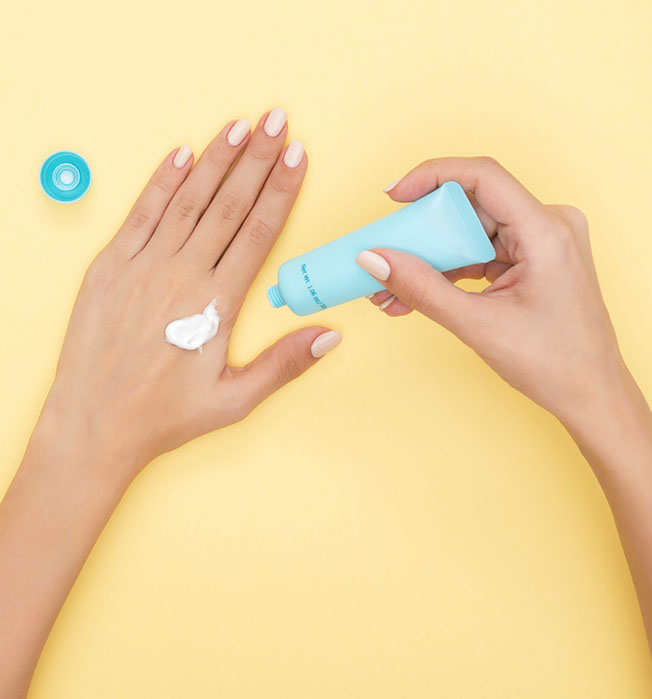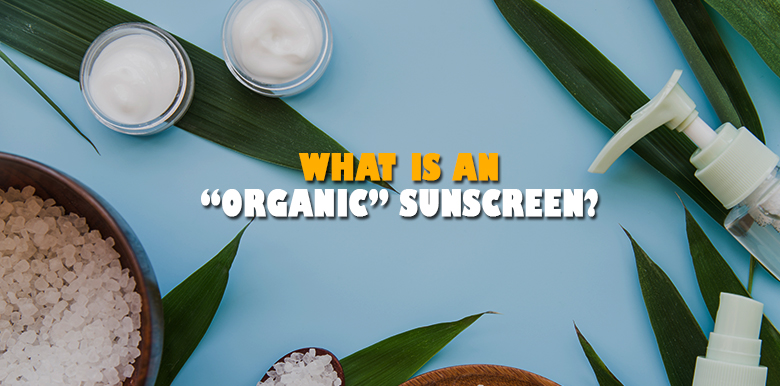Many people think organic means natural but that’s not the case. Technically, an “organic” sunscreen is one that uses carbon-based chemicals, like oxybenzone, avobenzone, and octinoxate, to diminish the impact of ultraviolet radiation. The word organic is incredibly confusing in many situations, but especially when referring to sunscreen.

All this said, when regular people (as opposed to chemists) refer to organic sunscreens, they are usually talking about a barrier cream (zinc and/or titanium) that has fewer and healthier ingredients than a mainstream sunscreen you might find in the grocery store. A less confusing term would be “non-toxic sunscreen”, as it implies that we are comparing a more environmentally-aware product with a traditional sun protection product.
IS A BARRIER SUNBLOCK BETTER THAN A CHEMICAL SUNSCREEN?

This is a much-argued point, and there is not enough science out there to back any extreme position. There seems to be increasing evidence that oxybenzone, a very common chemical sunscreen, may act like estrogen in the body, which increases the likelihood that it will disrupt our innate hormone cycles. Another controversial chemical is retinyl palmitate, which can slow skin aging, but may actually accelerate the development of certain skin cancers when it comes in contact with ultraviolet light. PABA is not used as much as it once was, but there’s a fairly large population of people who are allergic to that ingredient by now. In short, there are several, really good arguments for using a non-nano physical sunscreen made with zinc oxide and titanium dioxide: they are not absorbed by the skin; they are not degraded by exposure to sunlight, making them more stable over time; and there are often fewer and less toxic ingredients that make up the “inactive” ingredients in the product. Of the chemical screens, avobenzone is the one that protects against UVA rays and has a lower toxicity profile than other screens – at least for now.
WHAT SHOULD YOU LOOK FOR IN A SUNSCREEN?

Look for fewer ingredients overall, stick with non-nano zinc and titanium particles until we know more about the effects of nanoparticles, and look for a product with no parabens and no fragrance. (Even essential oils oxidize in sunlight, which can increase your chance of having a skin reaction to them.) An SPF of 30 is probably sufficient, and you should still be wearing hats and long sleeves when you’re out in the sun for prolonged periods. And, remember that a smidge of sunlight – 15 minutes on bare skin a few times a week – keeps your Vitamin D levels in the healthy range, so don’t sweat it if you walk to lunch now and then without your sunscreen!
